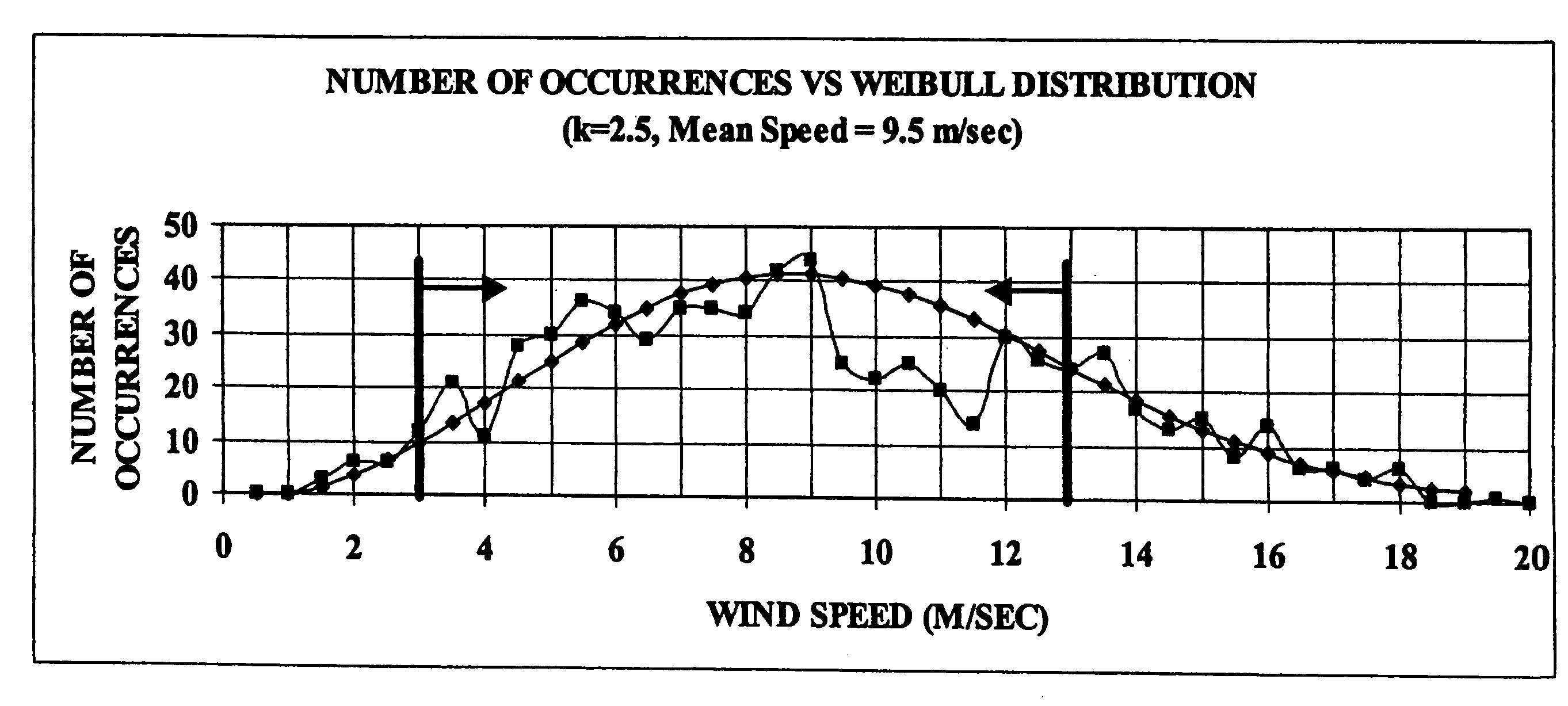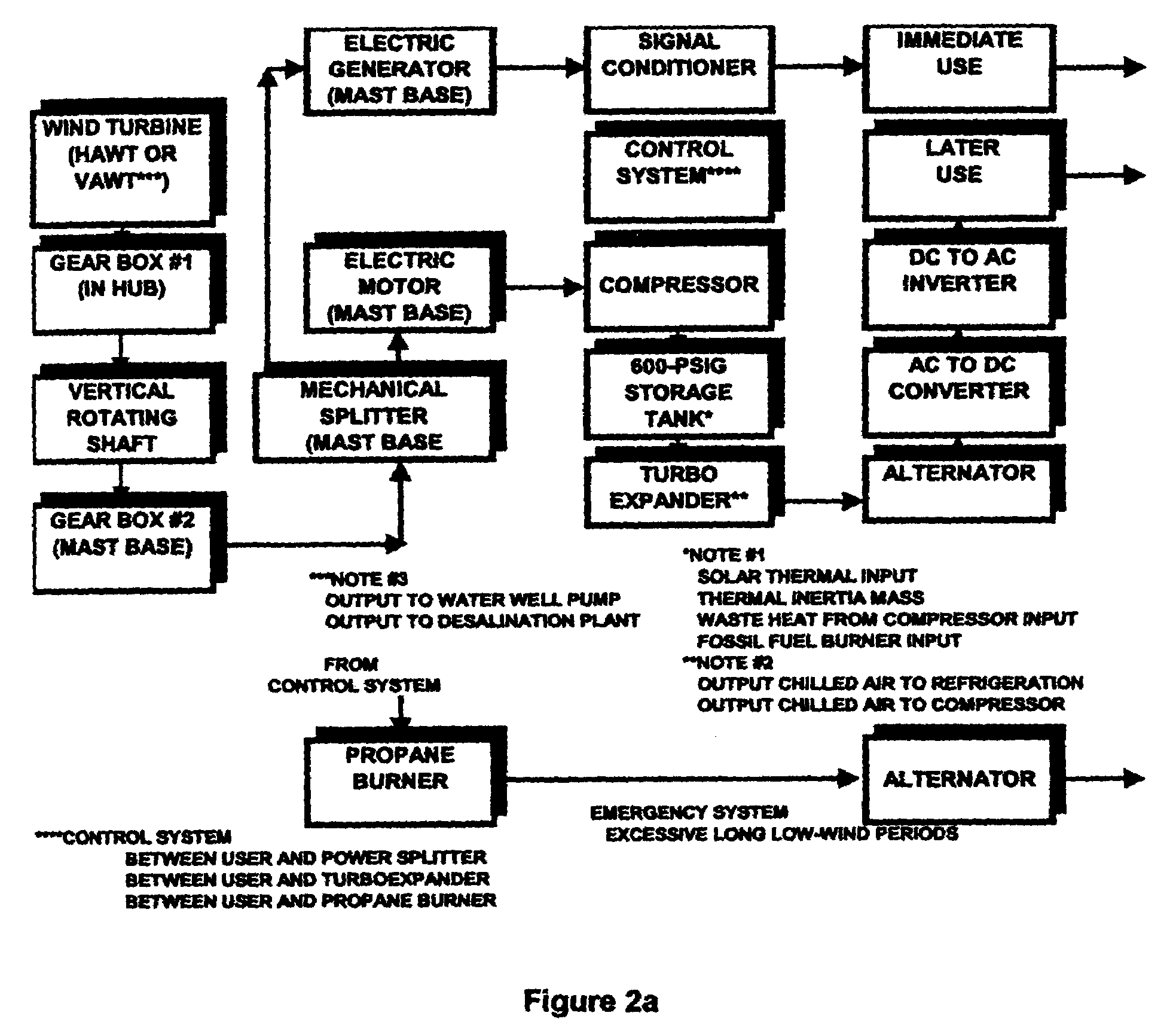Method of coordinating and stabilizing the delivery of wind generated energy
a technology of wind generated energy and coordination and stabilization, applied in the direction of fluid couplings, greenhouse gas reduction, instruments, etc., can solve the problems of disproportionate change in wind generated power, oil, gas and coal may someday run out, wind by its very nature unpredictable and uncertain, etc., to achieve effective coordination, manage and stabilize the delivery of wind generated energy, and avoid sudden surges and swings. , the effect of reducing fluctuations and oscillations of wind power
- Summary
- Abstract
- Description
- Claims
- Application Information
AI Technical Summary
Benefits of technology
Problems solved by technology
Method used
Image
Examples
Embodiment Construction
[0043]The present application incorporates by reference the subject matter of U.S. application Ser. No. 10 / 263,848, filed on Oct. 4, 2002, entitled “Method and Apparatus for Using Wind Turbines to Generate and Supply Uninterrupted Power to Locations Remote from the Power Grid,” which discusses the windmill stations, storage, heating and other apparatuses and methods that are capable of being used with the present invention. The present application also incorporates by reference the subject matter of U.S. application Ser. No. 10 / 857,009, filed by applicants on Jun. 1, 2004, 2003, entitled “A Method of Storing and Transporting Wind Generated Energy Using a Pipeline System,” which discusses the use of a pipeline system for storing and transporting wind generated energy that is capable of being used in connection with the present invention.
[0044]The apparatus portion of the present invention preferably comprises different types of windmill stations, including a first type having a horiz...
PUM
 Login to View More
Login to View More Abstract
Description
Claims
Application Information
 Login to View More
Login to View More - R&D
- Intellectual Property
- Life Sciences
- Materials
- Tech Scout
- Unparalleled Data Quality
- Higher Quality Content
- 60% Fewer Hallucinations
Browse by: Latest US Patents, China's latest patents, Technical Efficacy Thesaurus, Application Domain, Technology Topic, Popular Technical Reports.
© 2025 PatSnap. All rights reserved.Legal|Privacy policy|Modern Slavery Act Transparency Statement|Sitemap|About US| Contact US: help@patsnap.com



